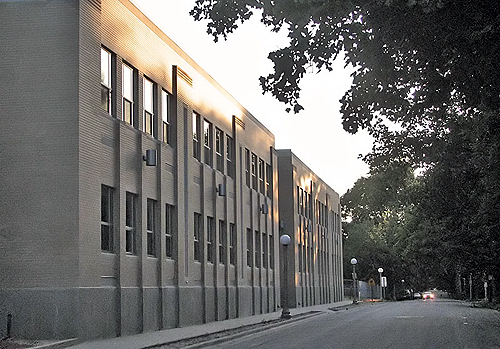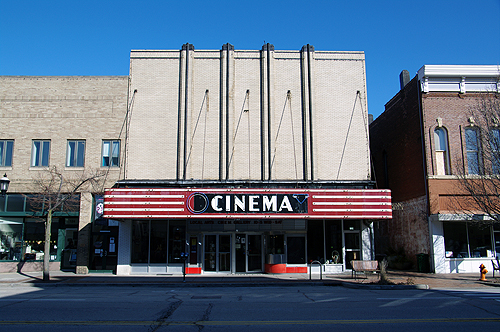Art Deco (1920 - 1940)
 |  |
Art Deco is a decorative style stimulated from the Paris Exposition internationale des arts décoratifs et industriels modernes of 1925. The style aspired for a modern and artistic expression to complement the machine age, and was the first widely popular style in the U.S. to break from the Beaux-Arts and period houses. Art Deco buildings are usually characterized by zigzags, chevrons and other stylized and geometric ornamentation in low relief on building facades. External wall surfaces are smooth and typically have a stucco finish. Verticality in the façade is emphasized by towers and other vertical projections beyond the roof line. Influenced by archaeological discoveries of the time, geometric patterns of aluminum, stainless steel and inlays of exotic stones and wood would often be used to create a sense of stylish and elegant modernism. | |
Although the Art Deco style became rather popular in the United States in the 1930s, it was used primarily for the design of apartment buildings, skyscrapers and institutional buildings. The style was extremely rare in domestic architecture. New York City is home to some prominent Art Deco style buildings, including the Chrysler Building (1930) in New York City which was the tallest building in the world (1,046 ft) at the time it was built, designed by William Van Alen and the old McGraw Hill Building on West 34th Street in New York City, designed by Raymond Hood. Miami Beach has several apartments in the Art Deco style. Toward the late 1930s, the Art Deco style was greatly influences by streamlined industrial forms of ships, airplanes and automobiles and movement quickly transitioned to the Art Moderne style. The two styles can be found to be used together by combining the verticality and zigzag motifs of Art Deco with the horizontal ornamentation and streamlined form of the Art Moderne style. | |
